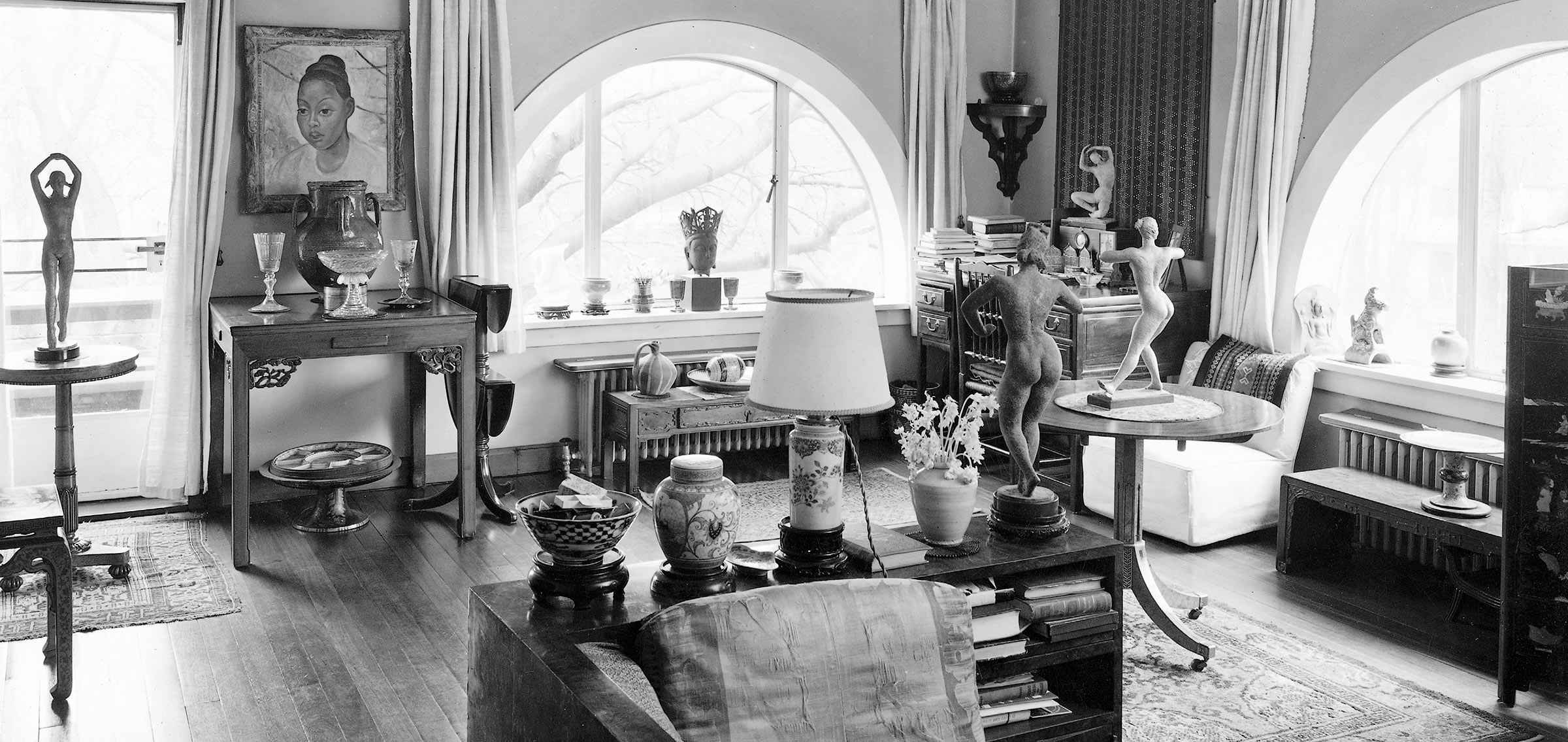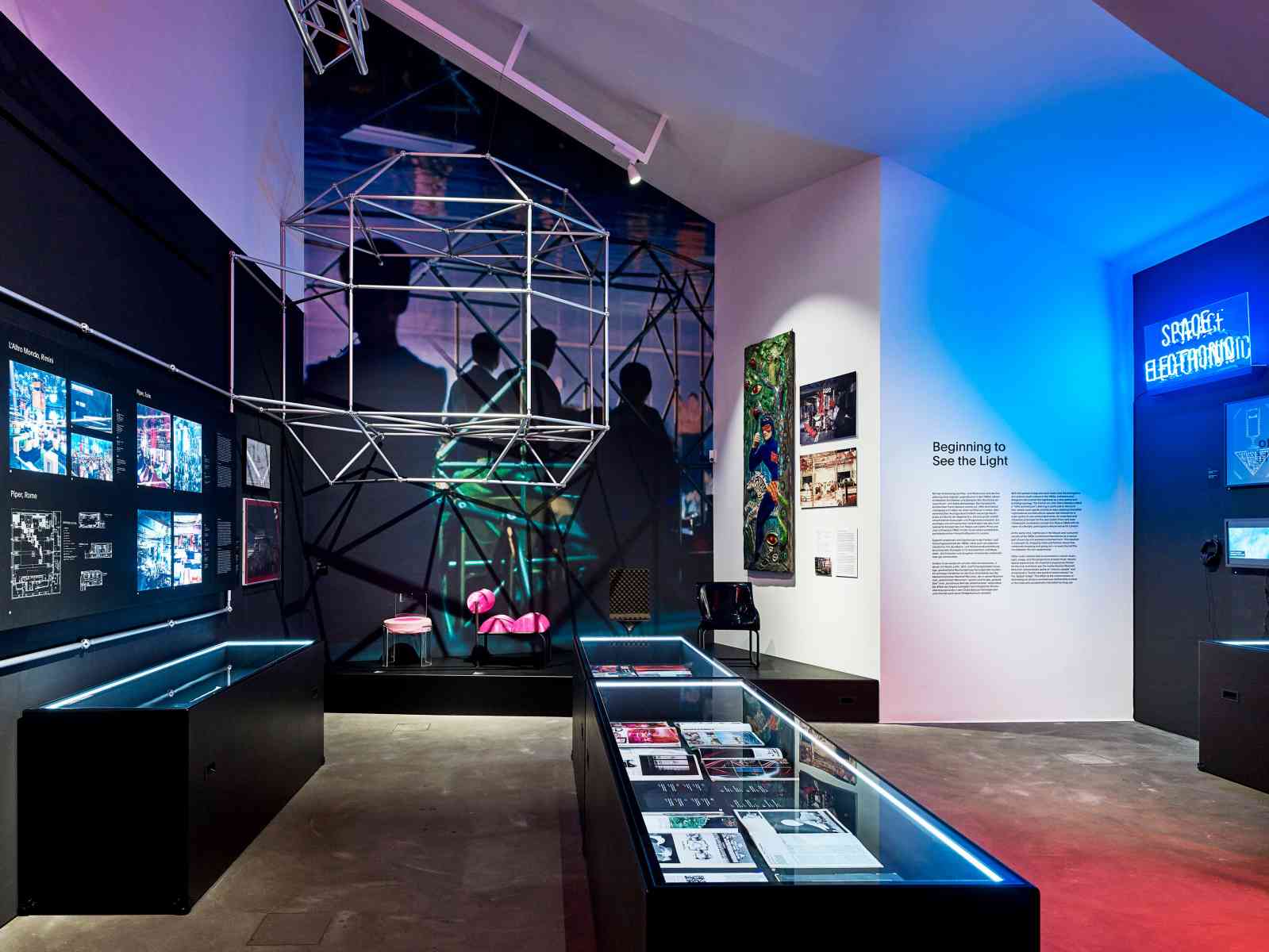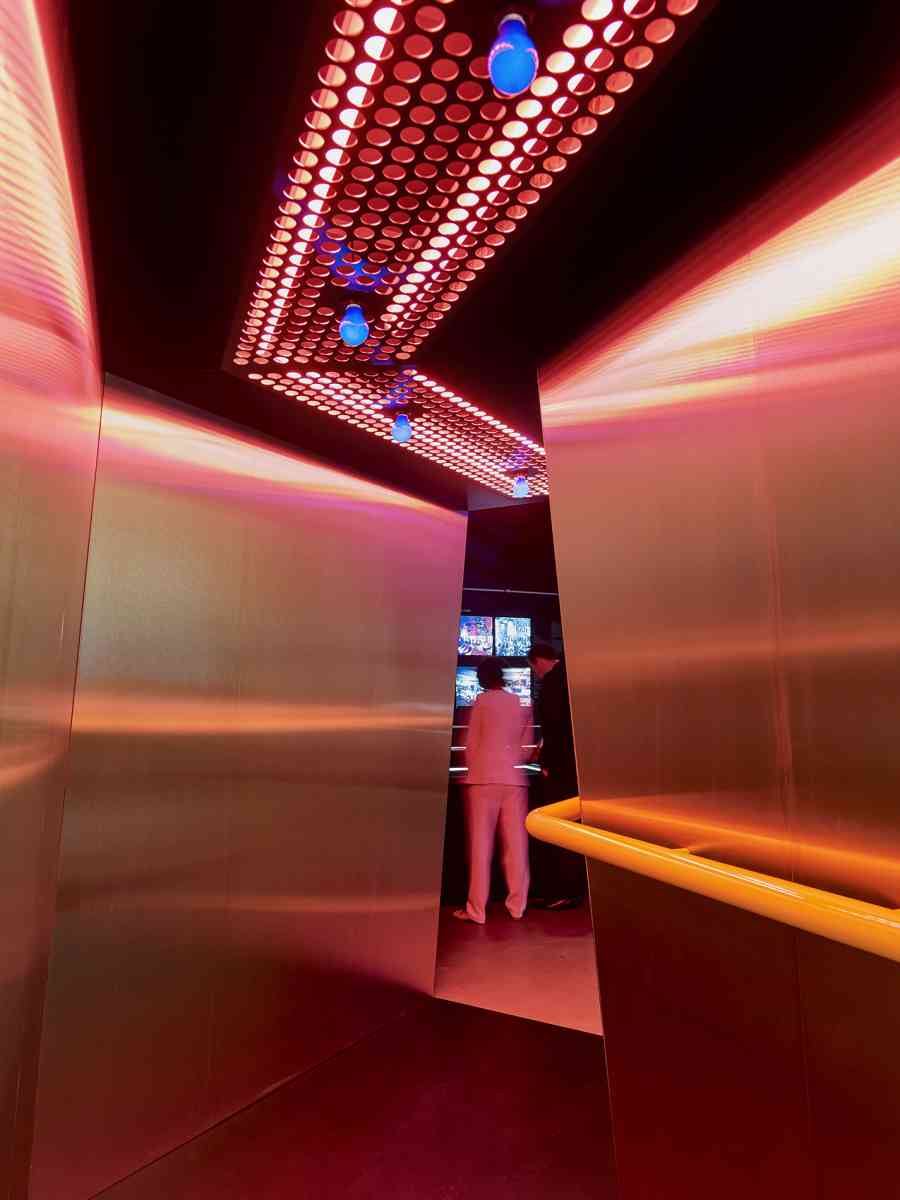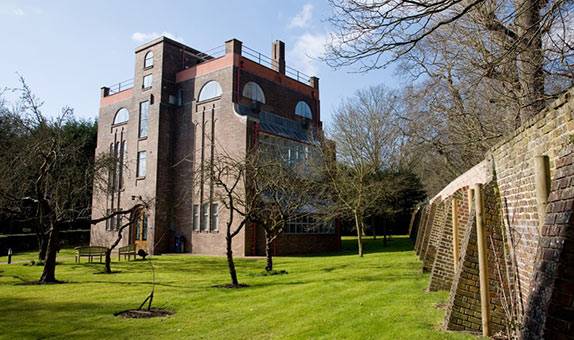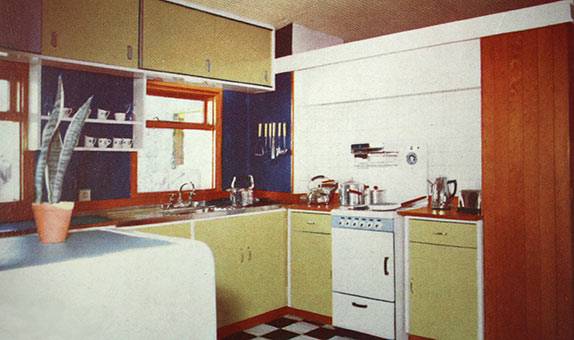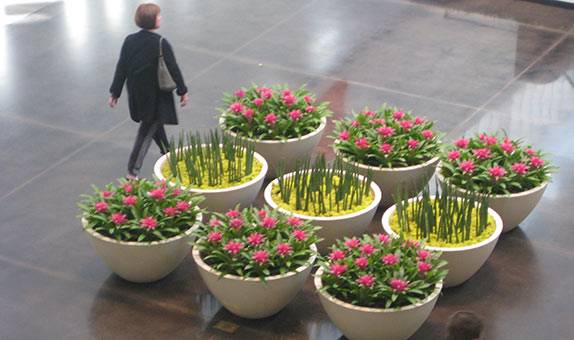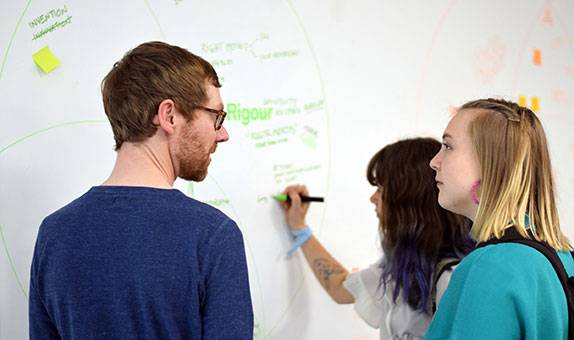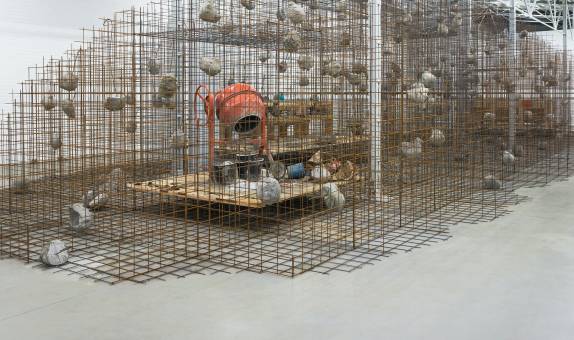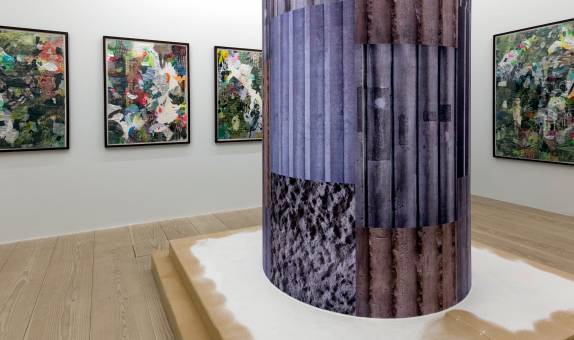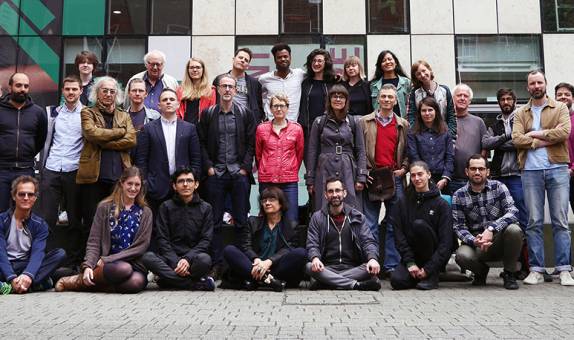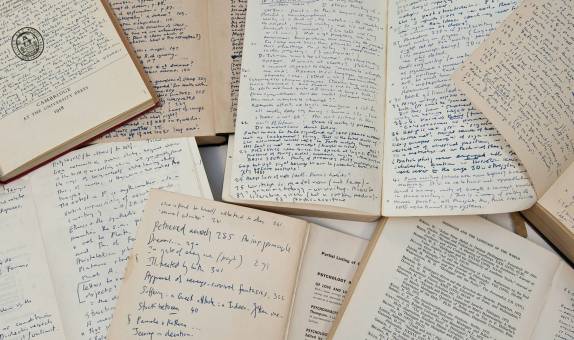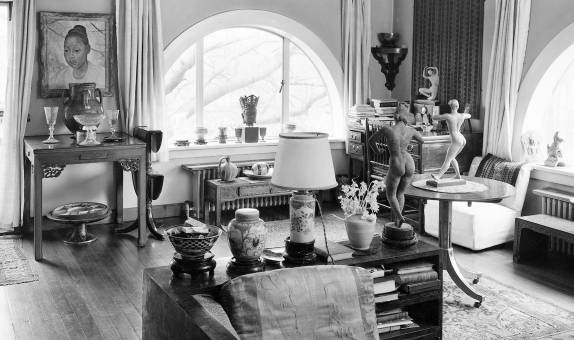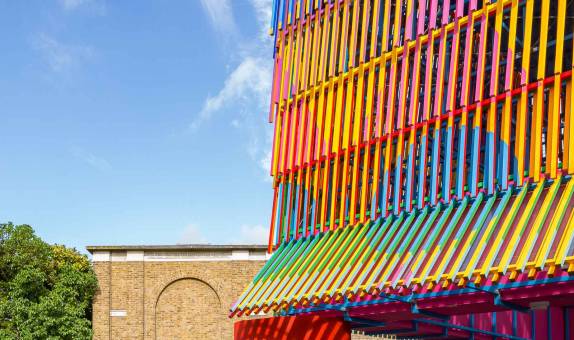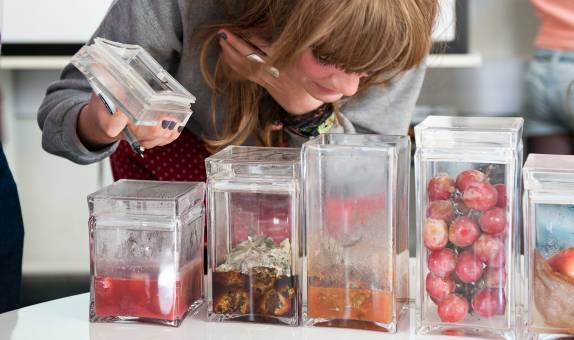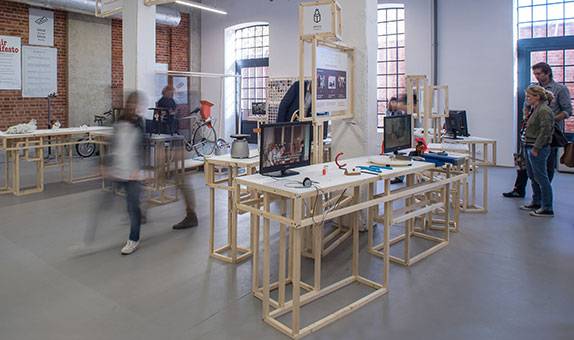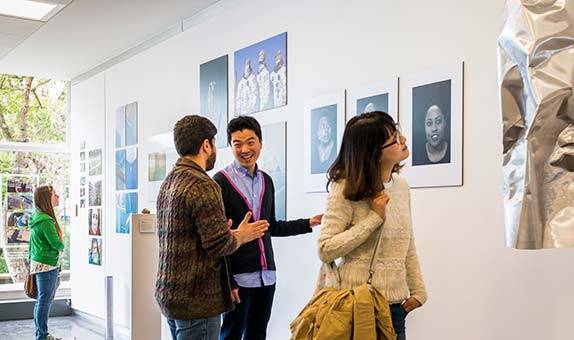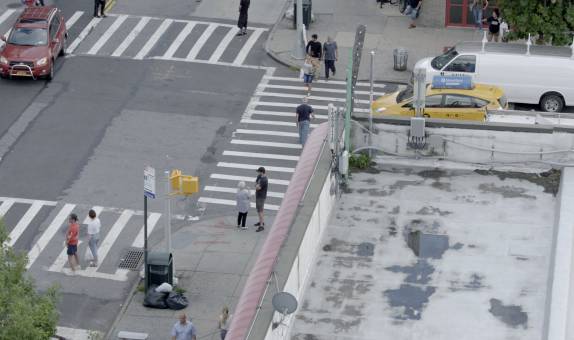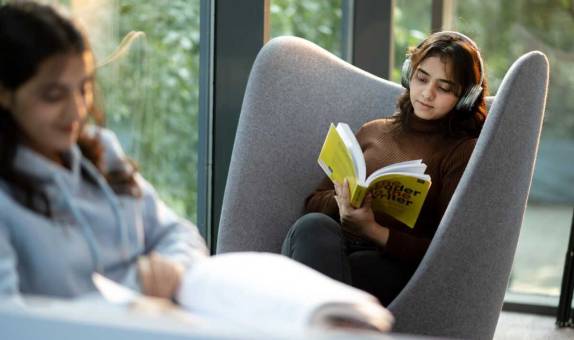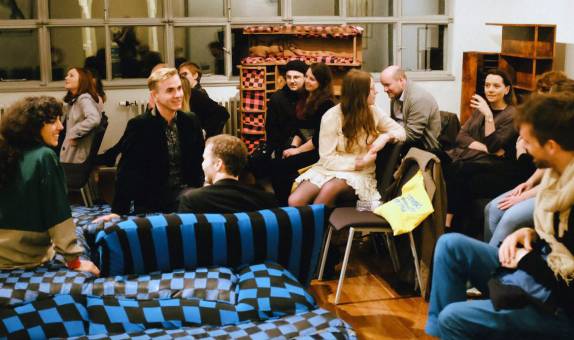Exhibitions, conferences and events
Online Conference: The Exhibition as Interior
Tuesday 9 May 2023, 10:00 – 17:00 UK time
Hosted by The Modern Interiors Research Centre, Kingston University London.
Exhibitions have long been studied by scholars in the fields of art, design, and architectural history and cultural studies. They have, for example, been seen as representations of national or global identities – as communicators of a range of ideologies, from political fascism to Cold War socialism and corporate capitalism and, most recently, as tools for undertaking and sharing research. They have long been understood as having a didactic and/or a commercial function. Very often, however, the focus has been more upon their contents and their narratives than on their design. Very seldom have they been considered as a specific type of constructed interior.
This conference addresses histories, theories, and practices of exhibitions as interiors in a wide range of settings. They could include examples in purpose-built exhibition halls, pavilions, museums, and galleries, or others which temporarily occupy pre-existing structures such as hotels, department stores, transport spaces, heritage sites or private houses. It welcomes papers which consider the whole interior of the exhibition, from the building, the part of a building, or the temporary enclosure in which it is set, to the navigation within it. It embraces research on the spatial, material, and virtual qualities of exhibitions, the sensorial and the performative, as well as the political, social, ecological, and educational. It will also explore the roles and experiences of figures including the exhibition designer, curator, programmer, and exhibition visitor. Exhibitions under review could range from the cultural to the commercial and engage with examples created in both institutional and non-institutional settings, by amateurs and professionals, and through interdisciplinary, collaborative and/or participatory practices.
This new approach towards exhibitions as constructed interiors will open the possibility of engaging with ideas discussed in relation to interiors in general, from interiority to the relationship between the private and the public realms. It will also establish exhibitions as a site for discussion of themes of contemporary relevance, such as decolonisation, gender politics and the climate emergency. Importantly, the conference will also interrogate the consequences of adopting this perspective for contemporary curatorial and exhibition design practices.
Exhibition: At Home
Thursday 17 November - Saturday, 25 February* 2023, Stanley Picker Gallery
*closed 20–31 December 2022 / Reopens 3 January 2023
At Home consists of four films which each explore a key theme of domesticity: shelter, identities, well-being and connectivity. Created by the artists, designers and researchers Martha Rosler, Noam Toran, Superflux, and Simone Niquille between 1989 and 2021, the films offer a critical reflection on the values and meanings of the home in the past, present and future.
The exhibition is the next step in an ongoing research project by Penny Sparke, Jana Scholze and Cat Rossi, three members of Kingston University's Modern Interiors Research Centre. It originated as At Home: Panorama de nos vies domestiques, an exhibition curated for the 12th Biennale Internationale Design Saint-Etienne (April to July 2022). Countering more widespread presentations of domesticity focused on consumerist visions or technological utopias, At Home instead addresses experiences of living in and creating a home, wherein exhibition visitors are as much the experts as the curators.
Exhibition design by Plaid
Curated by Penny Sparke, Jana Scholze and Cat Rossi
Originally commissioned by Cité du Design and Biennale Internationale Design Saint-Etienne 2022
Symposium: At Home
Tuesday 24 May 2022, Online, 10am–7pm (Central European Time)
In conjunction with the exhibition At Home: Panorama de nos vies domestiques, Biennale Internationale Design Sainte-Étienne, 6 April to 31 July 2022. Curated by Cat Rossi, Jana Scholze, Penny Sparke.
Our homes provide us with shelter; with places where our identities are formed and can be expressed; and with environments in which we can maintain our well-being, and from which we can communicate with people at a distance through technology, and directly with our local communities. These benefits of living 'at home' are constantly being challenged and continually need to be interrogated and re-defined.
The exhibition At Home: Panorama de nos vies domestiques, curated by Penny Sparke, Cat Rossi and Jana Scholze, will address the major changes that have characterised, and will characterise, our ways of living in domestic spaces before, during and after the Covid-19 pandemic.
To accompany the exhibition, this day-long online symposium will host two keynote speakers, including Olivier Peyricot, the Scientific Director of the Biennale Internationale Design Saint-Étienne, and Dr Annmarie Adams, who has joint appointments in the School of Architecture and the Department of Social Studies of Medicine at McGill University, Montreal, and four conversations between the curators and a selection of designers whose work is in the exhibition, among them Anab Jain from the design studio Superflux and film-maker and architect, Liam Young.
While the keynote addresses will provide an overview of the aims and the design of the exhibition, as well as the broader context of the links between our homes and our well-being, the conversations will invite the audience to join in-depth discussions about the themes of shelter, identities, well-being and connectedness, which underpin the exhibition. Panel discussions will bring the ideas together and there will opportunities throughout the day for the audience to pose questions to the panel members.
Modern Interior Research Centre MIRC 2021 Webinar: Interiors in the era of Covid-19
Wednesday, 24 March 2021: 10.30am–1.10pm and 2–5.10pm (GMT)
The Covid-19 pandemic caused people, worldwide, to be confined to their homes for extended periods of time. In addition to their traditional roles as places of refuge and nurturing, homes had to accommodate the additional roles of schools, gymnasia, restaurants, cinemas, offices, making spaces and more. Above all, the home has been looked to as a site to support and enhance the well-being of its inhabitants in a variety of ways. Many of these new functions are tech-enabled. At the same time, the work and hospitality spaces in our city centre buildings sit empty.
MIRC's Webinar, Interiors in the era of Covid-19, reflects on the complex ways in which interiors responded historically, and are responding, to Coronavirus and similar historical crises. Papers will address the multiple transformations that have taken place in interiors, both private and public, as a result of these and focus on how this has affected our perceptions of, and our relationships with, the interiors we inhabit.
Examples of past conferences and events include the following:
Modern Interiors Research Centre 2019 Research Symposium
The 2019 Research Symposium took place on 30 January at Dorich House Museum.
Norwegian Crafts/Punkt Ø The desire to get down and dirty
Dr Stephen Knott – Talk
In recent years practitioners, researchers, curators and critics concerned with the importance of making have naturally welcomed a renewed interest in craft, both from the general public and the nebulous world of fine art. From Assemble's winning the 2015 Turner Prize, sloppy ceramics at the Venice Biennale and live weaving demonstrations, to education scenarios that place the hand-made centre stage, it looks that making is back in fashion.
While experiencing this vogue there is an opportunity to triumph histories of craft thinking and practice that have long been marginalised, and question the motivation behind the current resurgent need to get our hands dirty. Does it originate from disillusionment with the sensory limitations of digital screen-based media? And if there is a desire to see 'evidence' of the processes and plain hard graft that lie behind the production of objects, how is this manifest and managed in contemporary artworks?
Punkt Ø GALLERI F15 Tendenser 2018 - Give it time
Dr Stephen Knott – Curator
For this thematically-led iteration of Tendenser (2018) the aim is to explore the various ways in which craft is experienced in time, drawing attention to daily rhythms, the momentary, and the ongoing. With a view to get behind the finished, pristine object, the exhibition foregrounds process, the experience (or phenomenology) of making, and the complexity of exercising skilled labour in challenging economic environments.
Night Fever: Designing Club Culture 1960 to Today Vitra Design Museum, Weil am Rhein March - September 2018
Night Fever is a touring exhibition that opened at Vitra Design Museum in Germany in March 2018. Co-curated by Jochen Eisenbrand (Chief Curator, Vitra Design Museum), Dr Catharine Rossi and Dr Nina Serulus (ADAM Design Museum, Brussels) this is the first large-scale examination of the relationship between design and club culture from the 1960s to the present, on an international scale. The exhibition is accompanied by a 400-page catalogue, co-edited by Eisenbrand and Rossi, and an events programme.
See more details on the website and the press release.
2018 Design History Society Conference panel: Film and Displacement: Interiors
The panel of three papers focuses on considering displacement through issues in design and film, with special reference to interiors – in the widest sense of that word.
Convened by Pat Kirkham: Professor: Design History, Kingston University, UK.
Papers
- Azadeh Fatehrad, Artist, Curator, and Cultural Historian, Kingston University, UK, Displacement and Transitions: The State of In-Between-ness and Displacement within Interior Architectural Spaces in the Films of Iranian filmmaker Sohrab Shahid-Saless.
- DrErsi Ioannidou. Senior Lecturer:Interior Design, Kingston University, UK, Interstellar Arks.
- Timothy M. Rohan: Associate Professor, University of Massachusetts, USA, Displacement and Alienation in 1970s Films Featuring New York Interiors.
Modern Interiors Research Centre, Research Symposium, Interiors: Film, Theatre, Television
Kingston University, Dorich House Museum, 24 January 2018
A Research Symposium co-convened with Parsons School of Design, New York.
Programme
- Sarah Lichtman, Parsons School of Design, Designing Anne Frank: Space and the Theatrical Construction of a Teenage Girl
- Alice T. Friedman, Wellesley College, "His Attention was Fixed Upon My Clock": Signifiers of Masculinity in the Queer Interior
- Jane Barnwell, University of Westminster, Production Design for Screen
- Lisa Godson, NCAD, Dublin, Double Distance: Strategies for Documenting Tropical Architecture Across Space and Time
- Catherine Ince, V&A London, Interior Power: artist filmmakers Amie Siegel and Laura Gannon on domestic space, objects and meaning
- Azadeh Fatehrad, Kingston University, Transitions: The State Of In-Between within Interior Architectural Spaces
Book launch of Architectures of Display: Department Stores and Modern Retail by P Lara-Betancourt et al.
Modern Interiors Research Centre, Research Symposium
Kingston University, Dorich House Museum, 18 January 2017
This influential event focused on three contrasting studies looking at an innovative mid-20th century architect-designed home in Leicester; Manhattan interiors of the late 1960s; and Franco-era domestic interiors in Spain; and an introduction to the Iconic Houses Network from its founder Natascha Drabbe.
Programme
- Pat Kirkham, Kingston University London – 22 Avenue Road, Leicester by Fello Atkinson and Brenda Walker
- Tim Rohan, University of Massachusetts, USA – Manhattan 1969: Lifestyle, Media and the New Interior Architecture
- Ana-Maria Fernandez, University of Oviedo, Spain – Just what is it that makes Spanish homes so different, so appealing? About Francoist Domestic Interior Design
- Natascha Drabbe, Iconic Houses Network, Netherlands – Iconic Houses Network
Book launch for the Routledge Companion to Design Studies by Penny Sparke and Fiona Fisher.
Research Symposium, Interiors: Film, Theater, Television
Parsons School of Design, New York, 18 November 2016
A jointly hosted symposium with the MA program in the History of Design and Curatorial Studies at the School of Art and Design History and Theory, Parsons School of Design.
Papers
- Alice T. Friedman, Grace Slack McNeil Professor of American Art, Wellesley College, "Park Avenue Royalty: Apartments for Queens and Princesses"
- Sarah A. Lichtman, Assistant Professor, Design History, Parsons School of Design, "Designing Anne Frank: Space and the Construction of a Teenage Girl"
- Marilyn Cohen, Assistant Professor, Parsons School of Design, "Decorating 'I Love Lucy' "
- Sorcha O'Brien, Senior Lecturer, Design History and Theory, Kingston University London, "Visions of Home: Nostalgia and Mobility in Serenity's Domestic Interior"
- Caitlin Dichter, Cultural Resource Specialist, North Wind Group, "Opening Doors You Never Dreamed Existed: The Many Decorative Faces to 'Auntie Mame'"
- Christian Larsen, Associate Curator, Modern Decorative Arts and Design, Metropolitan Museum of Art, "Design, Environment, and Ecofeminist Suburban Horror in Todd Haynes' Safe"
Research Symposium
Dorich House Museum, January 2016
A one-day symposium, to which invited speakers contributed papers on their recent/current research on interiors.
- Alice T. Friedman, Wellesley College, "Poker Faces: Seeing Behind the Mask of Convention"
- Catherine Ince, The Barbican Art Gallery, "Something about The World of Charles and Ray Eames"
- Fredie Floré, KU Leuven, "The Politics of Furniture. Identity, Diplomacy and Persuasion in Post-war Interiors"
- Penny Sparke, Kingston University, "Nature, Culture and the Design of the Feminine Sphere in the Nineteenth Century"
- Charles Rice, University of Technology, Sydney, "The Atrium Effect"
Symposium 'Open Doors: Domestic Interiors and Material Culture in Latin America'
55th International Congress of Americanists (ICA), San Salvador (El Salvador), 12–17 July 2015
Symposium co-convened by Patricia Lara-Betancourt (MIRC, Kingston University London) with Gladys Arana (Universidad Autónoma de Yucatán, Merida, Mexico.
The body of literature on the history of domestic architecture and interiors in Latin America is scant, fragmentary and not yet disseminated. The home has been little researched from a historical perspective and its interiors and domestic material culture are therefore largely unknown.
As a privileged space for the forging, affirming and contesting of identities (class, gender, local, national), the domestic interior is a key site of social and cultural generation and transformation. The process of home making is fundamental to social life, with its hybrid melding of tradition and modernity, gradually producing a personal, familial and collective palimpsest.
The symposium invited and selected papers about domestic interiors in Latin America in the 19th and 20th centuries, with the aim of illustrating and charting the changes that have permeated them within a framework of identity building, and particularly with reference to issues of class, gender and nation.
Research Symposium
Dorich House Museum, 21 November 2014
A one-day symposium, to which invited speakers contributed papers on their recent/current research on interiors.
Speakers
- Professor Pat Kirkham, Bard Graduate Center, New York, "Re-assessing Charles and Ray Eames"
- Ben Highmore, University of Sussex, "Habitat and the Making of Taste"
- Paula Lupkin, University of North Texas, "For Men, By Men: Building and Furnishing the YMCA"
- Barbara Penner, The Bartlett School of Architecture, UCL, "Researching Life: Herman Miller's Metaform Project"
- Alice T. Friedman, Wellesley College, USA, "The Cultured Corporation: New Light on the Art of Post-war Lobby Design"
Domestic Advice Literature and Histories of Home
Geffrye Museum, London, 31 January 2013,
In collaboration with the Histories of Home Specialist Subject Network.
The event brought together scholars from different disciplines to consider the role of advice literature in the study of the home, its design and interiors, recognising the significance of the source in shaping perceptions and representations of the domestic sphere. Examples of home decoration and household management advice, published from the second of half of the 19th century onwards, were discussed. Themes included the problematic nature of the relationship between ‘ideal' and ‘real' interiors and the multiple agendas and influences which have informed the production of different types of domestic advice.
Speakers
- Penny Sparke, Kingston University, "Domestic Advice Literature"
- Grace Lees-Maffei, University of Hertfordshire, "Stories of Home: Domestic Advice Literature as Narrative"
- Lesley Hoskins, Queen Mary, University of London, "Calibrating advice: prescription and practice in the mid-nineteenth century"
- Rachel Ritchie, Brunel University, "From the Council of Industrial Design to the Co-op: influences on interior design and décor advice in women's magazines, 1954-1969"
- Emma Ferry, Nottingham Trent University, "‘Any lady can do this without much trouble': class and gender in Mrs Loftie's The Dining Room"
- Nicholas Tromans, Kingston University, "‘An alien in the decorative community': the problem of pictures in British domestic advice literature"
- Patricia Lara-Betancourt, Kingston University, "Advice literature as reform discourse"
Spaces and Places: British Design 1948–2012
11–12 May 2012, V&A, London
In collaboration with the V&A Research and Education Departments
Developed as part of the British Design Season at the V&A, Spaces and Places: British Design 1948-2012 explored a range of public and private spaces – domestic spaces, educational spaces, retail spaces and leisure and transport environments – from the perspective of world-class British design in the post-war period.
Keynotes
- David Kynaston (Independent Scholar)
- Owen Hatherley (Writer and Journalist)
Speakers
Christopher Breward and Ghislaine Wood (curators of British Design 1948–2012: Innovation in the Modern Age), Christine Lalumia, Fiona Anderson, Alison Clarke, Cheryl Buckley, Janine Barker, Paul Gorman, Julian Powell Tuck, Piers Gough, Maurice Howard, Jules Lubbock, Alan Powers, Catherine Burke, Harriet McKay, Joe Kerr, Joe Moran.
FLOW 2 – A Conference in Two Parts
8-10 February 2012, University of Melbourne, Australia
In collaboration with Melbourne School of Design, University of Melbourne
Fluid urban conditions such as supermodern public spaces – international airports, shopping malls, urban plazas and post-industrial parks – render problematic the relatively simple dualities of 'inside' and 'outside', 'private' and 'public', 'domestic' and 'non-domestic' and 'place' and 'non-place'. Likewise, global concerns such as climate variability, economic instability and transnationalism are similarly informing discussion about design, occupation and conservation, particularly where local ecologies and practices are impacted by the flow of change.
FLOW 2, the second investigation into the transitional and intermediary relationships between interiors and landscapes, took a theoretical and practice-based approach to the examination of historical and contemporary interiors and landscapes, focusing on those arising from the emergence of increasingly fluid and virtual spatial environments. The conference was accompanied by an exhibition of practice-based responses to the conference theme, held at the Wunderlich Gallery at the University of Melbourne.
Keynotes
- Jeff Malpas (University of Tasmania)
- Kerstin Thompson (Kerstin Thompson Architects)
Speakers
Elias Constantopoulos (University of Patras, Greece), Luca Basso Peressut (Politecnico di Milano, Italy), Suzie Attiwill (RMIT University, Australia), Esben Skouboe Poulsen, Anne-Marie Sandvig Knudsen and Ole B. Jensen (Aalborg University, Denmark), Michael Chapman (University of Newcastle, Australia), Chris Hay (Lincoln University), Patricia Brown (Kingston University), Sing d'Arcy (University of New South Wales, Australia), Berta Tello Peon (UNAM, Mexico) and Lucia Tello Peon (University of Yucatán, Mexico), Joel Sanders (Yale University), Donna Wheatley, Ninotschka Titschkosky, and Domino Risch (BVN Architecture, Australia), Kendra Locklear (University of Texas at Austin), Elisa Bernardi (Politecnico di Milano), Lorens Holm (University of Dundee, UK)
Exhibitors
Jude Walton and Phoebe Robinson, Sarah Jamieson and Nadia Wagner, Sarah Breen Lovett, Gini Lee and Dolly Daou, Eleanor Suess, Donna Wheatley and Ninotschka Titschkosky.
